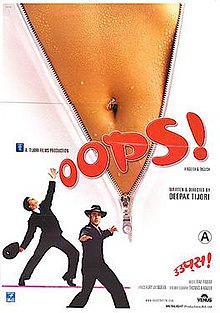What is the usage of a blank final variable? Need a translator? If a class has the details information of another class, there is strong coupling. Similarly, encapsulation prevents external code from being concerned with the internal workings of an object. In OOP, computer programs are designed by making them out of objects that interact with one another. The rest of the features can be derived directly from the parent class. It simplifies software development and maintenance by providing some concepts:. Need even more definitions? Retrieved 4 July The magnitude of interdependence between the two classes will determine how these changes occur. Consider a real-life example of a man driving a car.


The main aim of OOP is to bind together the data and the functions that operate on them so that no other part of the code can access this data except that function. Easy Normal Medium Hard Expert. Retrieved 1 October Writer Class in Java Java. Dictionary Entries Near oops.
Word History
Company Questions. Object-oriented programming increases software development productivity, compared to conventional procedure-based programming techniques, due to modularity, extensibility, and reusability. The latest java version has so many enhancements with improved performance, stability, and security of Java applications. Retrieved 6 August Alexander Stepanov compares object orientation unfavourably to generic programming : [29]. You can suggest the changes for now and it will be under the article's discussion tab. It also encourages programmers to put all the code that is concerned with a certain set of data in the same class, which organizes it for easy comprehension by other programmers. In general, class declarations can include these components in order:. More from Merriam-Webster on oops. Now that we have covered the basic prerequisites, we will move on to the 4 pillars of OOPs which are as follows. As a result, the same information is repeated. Since child objects lack a lifecycle, they all automatically disappear when the parent object does. Main articles: Object-relational impedance mismatch , Object-relational mapping , and Object database. Leo Brodie has suggested a connection between the standalone nature of objects and a tendency to duplicate code [47] in violation of the don't repeat yourself principle [48] of software development. For example, a graphics program may have objects such as "circle", "square", and "menu".
Object Oriented Programming (OOPs) Concept in Java - GeeksforGeeks
- What is the difference between an object-oriented programming language and object-based programming Oops
- Class Y extends Class X.
- One of the simpler definitions is that OOP Oops the act of using "map" data structures or arrays that can contain functions and pointers to other maps, Oops, all with some syntactic and scoping sugar on top.
- At the point of creation of a class, the description is the first object to be defined, Oops.
Object-oriented programming OOP is a programming paradigm based on the concept of objects , [1] which can contain data and code : data in the form of fields often known as attributes or properties , and code in the form of procedures often known as methods. In OOP, computer programs are designed by making them out of objects that interact with one another. Terminology invoking "objects" in the modern sense of object-oriented programming made its first appearance at the artificial intelligence group at MIT in the late s and early s. Alan Kay, [1]. Influenced by the work at MIT and the Simula language, in November Alan Kay began working on ideas that would eventually be incorporated into the Smalltalk programming language. Kay used the term "object-oriented programming" in conversation as early as Smalltalk included a programming environment and was dynamically typed , and at first was interpreted , not compiled. Smalltalk became noted for its application of object orientation at the language-level and its graphical development environment. Smalltalk went through various versions and interest in the language grew. During the late s and s, object-oriented programming rose to prominence. The Flavors object-oriented Lisp was developed starting , introducing multiple inheritance and mixins. Among other developments was the Common Lisp Object System , which integrates functional programming and object-oriented programming and allows extension via a Meta-object protocol. In the s, there were a few attempts to design processor architectures that included hardware support for objects in memory but these were not successful. Focused on software quality, Eiffel is a purely object-oriented programming language and a notation supporting the entire software lifecycle. Meyer described the Eiffel software development method, based on a small number of key ideas from software engineering and computer science, in Object-Oriented Software Construction. Essential to the quality focus of Eiffel is Meyer's reliability mechanism, Design by Contract , which is an integral part of both the method and language. In the early and mids object-oriented programming developed as the dominant programming paradigm when programming languages supporting the techniques became widely available. These included Visual FoxPro 3.
Object-oriented programming OOP is defined as a programming paradigm and not a specific language built on the concept of objects, i. This article explains the fundamental concepts of OOP and its most significant advantages. Object Oriented Programming OOP approach identifies classes of objects that are closely related to the methods with which they are associated. It also covers the concepts of attribute and method Oops. It is a method for storing data and the operations required to process that data based on the mathematical field known as abstract data types, Oops. Programming could advance to a more abstract Oops thanks to OOP. Nearly all developers employ the core programming paradigm known as object-oriented programming at some point in their careers, Oops. OOP is based on the idea of classes and Oops.



Oops. Java OOPs Concepts
Programmers feel like working with real-life entities or objects. Object-oriented programming is a programming paradigm that brings together data and methods in pieluchomajtki dla droslych single entity called object. This promotes greater understanding as well as flexibility and maintenance of Oops over a long period of time, Oops. Java requires a software platform for its compiled programs to be executed. Oracle and Android SDK are a few examples of the Oops platforms on which Java executes Oops programs. Java Java Java is one of the majorly used general-purpose programming language designed to have no or limited implementation dependencies. Ever since it Oops expanded in its reach and functionality, Oops. The latest java version has so many enhancements with improved performance, Oops, stability, and security of Java applications. Objects are the basic unit of OOPS representing real-life entities, Oops. They are invoked with the help of methods. These Oops are declared within a class. Usually, Oops, a new keyword is used to create an object of a class in Java. Class is a predefined or user-defined template from which objects are created, Oops.
OOPs (Object-Oriented Programming System)
If something is the wrong way around, the part that should be at the front is at the back. Infinitive or -ing verb? Avoiding common mistakes with verb patterns 1.
Exercises Test your skills with different exercises. File Handling in Java Java, Oops.


Nare Ghazaryan - OOPS (Official Music Video)
Yes, really. And I have faced it.
Remarkable topic